Military Knowledge: Pantsir Short-Range Air Defense System

The Pantsir missile system is a self-propelled short-range air defense system that consists of a combination of surface-to-air missiles and anti-aircraft artillery. The Pantsir system, with NATO reporting name SA-22 Greyhound, is designed and manufactured by the KBP Instrument Design Bureau located in the city of Tula, Russia.
The Pantsir air defense system uses the general design concept of the Tunguska M1 system, which is a combination of air defense missiles and a 30 mm anti-aircraft gun. The philosophy of this type of design is to fight against helicopters that quickly reduce their height after firing and hide themselves from the radar, for this purpose a combination of defense missiles and anti-aircraft cannons is considered for quick reaction at different distances and in different situations.
The effectiveness of the AGM-88 HARM anti-radar missiles produced by the United States and the ALARM anti-radar missile produced by the United Kingdom against the old Soviet systems based in Iraq in the First Persian Gulf War showed that long and medium range defense systems need protection. Iraq’s defense systems were destroyed in the first few days of the Desert Storm operation due to anti-radar missile attacks. These missiles destroyed the defense systems’ radars without any obstacles. The operation showed that if a fighter jet equipped with an anti-radar missile gets close enough to fire the missile, the defense system’s radar is likely to be destroyed. Therefore, one of the goals of developing the Pantsir system was to protect all types of defense systems against anti-radar missiles.
Therefore, the purpose of the Pantsir defense system is to protect civil and military point and area targets and create defensive cover for motorized or mechanized forces up to regimental size and to defend higher-level air defense assets such as S-300 and S-400 against precision munitions, anti-radar missiles, cruise missiles and drones.
History:
The first thing to develop the system was the type of carrier chassis. Due to the fact that the purpose of making Pantsir is to provide air defense to S-300 long-range defense systems, the Pantsir defense system required high mobility. For this reason, a wheeled chassis seemed better than a tank tread for the Pantsir-S, because wheeled vehicles are faster and less prone to breakdowns, and are also easier to maintain and cheaper to manufacture.
Development of the Pantsir-S began in 1990 as a planned successor to the Tunguska M1. In the first step, the equipment such as the turret and radar were redesigned and then installed on the Ural-5323 chassis and the prototype was completed in 1994. This sample was displayed at the MAKS-1995 exhibition. Due to financial problems that began with the collapse of the Soviet Union in 1991, funding for the development of the Pantsir short-range defense was halted in 1995, but the KBP continued to develop the program using its own funds.
In order to reduce costs, the same 1L36-1 engagement radar and 9M335 missile used in the Tunguska system were used in the initial design. The turret was modified to increase the number of missiles from 8 to 12, and an optical sighting system was added to it, and the radar was also modified. Two liquid-cooled 30 mm 2A72 cannons with a firing power of 300 to 450 rounds per minute, with a muzzle velocity of 970 m/s and an effective range of 3000 to 4000 m were also used in the turret.



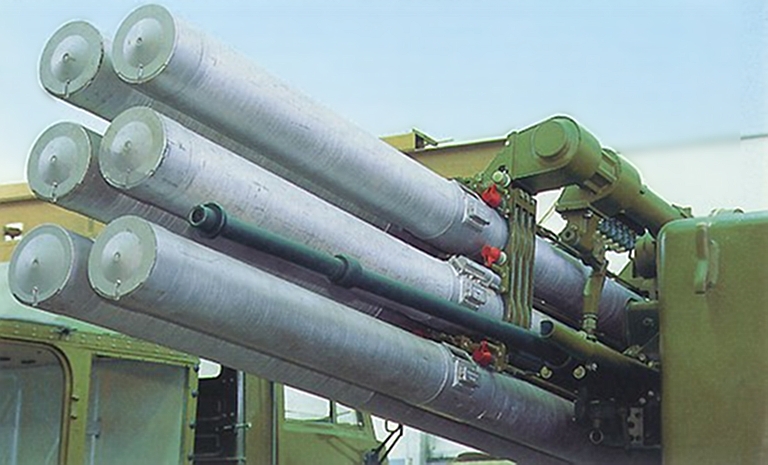
The prototype of the system had a folding paraboloid search radar operating in the S-band and a flat engagement radar with a conical radome capable of operating in both the X-band and MMW. These radars had the ability to detect and engage with targets with a radar cross section of 0.1 square meters at a distance of 15 km and engaged with two targets at the same time. The set of electro-opticals also gave the system a significant fighting power in the absence of radar.
The second radar of this system was 1RS2/1RS2-E Shlem or SSTsR fire control radar. This pulse doppler radar could detect a 2 square meter target from a distance of 30 kilometers. This radar operates in two X and Ku bands, the X band to detect the target and the Ku band to guide the missile. This radar, which had the ability to track one target and guide two missiles, was later replaced with another radar.
One of the reasons for cutting the budget for the production of Pantsir was the inability of this system to fire while moving. This problem was contrary to the main purpose of its development, i.e. protection of mobile systems. The reason for this problem was the use of a modified turret of the Tunguska system. To solve this problem, KBP started redesigning the turret and removed all the remaining features of the old design. Among these efforts was the production of a new PESA (passive electronically scanned array) radar to increase engagement power.
During the development of the Pantsir system, Ural-5323, MZKT-7930 and KAMAZ-6530 trucks were used, but eventually the KAMAZ-6560 truck entered the production line of this system. However, the MAN chassis provided by the European Union has also been used for the systems delivered to the United Arab Emirates. The development of these parts eventually led to the first release, the Pantsir-S1.
Variants of Pantisr missile system
Pantsir-S1 missile system:
The Pantsir-S1 defense system was supplied with a combination of an anti-aircraft gun and defense missiles, and all its components are installed on a carrier vehicle. This system is designed for point defense of military, industrial, facilities, etc. against warplanes, helicopters, precision ammunition, cruise missiles, and drones.
Pantsir-S1 system carrier vehicle:
As mentioned, this system uses the KAMAZ-6560 truck as the main chassis, which is used for the Russian army. KAMAZ truck is a 4-axle 8×8 truck. This 7.31 ton truck uses KamAZ-740.35-400 diesel engine. This 400 horsepower engine allows this truck to carry a maximum of 20 tons of cargo and tow 14 tons of cargo. KAMAZ-6560 truck is also used for other types of Pantsir defense system.
The Pantsir system can also be installed on the BAZ-6909 truck, which is the truck used in the S-400 system and is similar to the KAMAZ 8×8 truck, but unlike the KAMAZ-6560 truck, which has one steering axle, the BAZ has two steering axles. Also, the Pantsir system is available on the GM-352 armored chassis, which is shared with the Tunguska.




Pantsir-S1 armament:
The Pantsir-S1 carries up to twelve 57E6 two-stage solid fuel radio/optical command-guided surface-to-air missiles in sealed ready-to-launch container tubes. Missiles are arranged into two six-tube groups on the turret. The missile has a bicalibre body, consisting of two stages in a tandem configuration. The first stage is a booster, providing rapid acceleration within the first 2 seconds of flight, after which it is separated from the sustainer-stage. The sustainer is highly agile and contains the high explosive multiple continuous-rod/fragmentation warhead, as well as the contact and proximity fuses, guidance flare and radio transponder. The missile is not fitted with a seeker to keep target engagement costs low. Target and missile tracking is instead provided via the system’s multiband sensor system. Guidance data is submitted via radio link for up to four missiles in flight. The system is capable of tracking and guiding four missiles fired at four distinct targets. Operationally, however, two missile salvos are typically fired at each target. The 57E6 missile is believed to have a kill probability of 70–90%. They have a 15-year storage lifetime in its sealed launch container.
In addition to the described missiles, the Pantsir-S1 system has a liquid-cooled 30 mm 2A38M automatic cannon that can fire 1,950 to 2,500 rounds per minute with a muzzle velocity of 960 meters per second, and the turret magazine capacity has increased to 1,400 rounds.

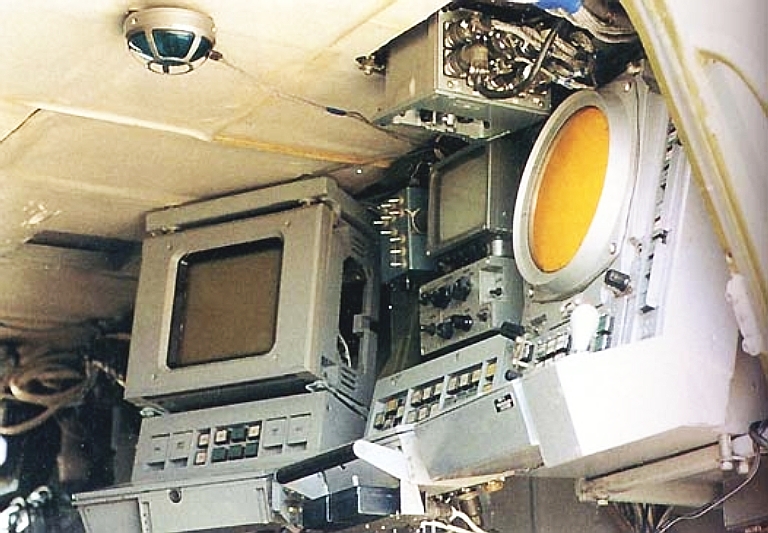


Pantsir-S1 radars
– 2L80E search radar made by VNIIRT company:
VNIIRT, which is a part of Almaz-Antey Holding as the world’s 8th largest contractor and designer of ground-based air surveillance radars, was responsible for the design of a new radar. The newly designed radar, known as the 2L80 and 2L80E, was a passive phased array (PESA) radar weighing 760 kg with mechanical rotation and dimensions of 1776 x 940 mm. This passive phased array radar is a 360-degree search radar and is mounted at the top and behind the turret and has a freedom angle of 26 to 82 degrees in height, which has a search capability from 1 to 50 km and scans the sky in 2 to 4 seconds. This radar is provided with the ability to identify air targets with an effective dispersion level of 2 to 3 square meters at a distance of more than 30 km and track them from a distance of more than 24 km. With its missiles, Pantsir-S1 can engage tactical aircraft with a maximum range of 20 km and an altitude of 10 km, subsonic cruise missiles with a range of 12 km and an altitude of 6 km, and high-speed air-to-ground missiles.
The performance of the 2L80E radar for different types of targets according to its radar cross-section is listed as follows:
36 km for a small fighter jet with a radar cross section (RCS) of 2 square meters.
20 km for a cruise missile with a radar cross section (RCS) of 0.1 square meters.
16 km for a glidebomb with a radar cross section (RCS) of 0.2 square meters.
12 km for an AGM-88 HARM anti-radar missile with a radar cross section (RCS) of 0.1 square meters.
32 km for an AH-64 Apache attack helicopter.
– 1RS2-1 fire control radar:
The 1RS2-1 fire control radar (export version 1RS2-1E), which is a passive phased array (PESA), was developed to replace the 1RS2-Shlem radar. This radar system engages with two targets simultaneously, and by prioritizing the targets and destroying them within one minute, it can engage with 12 targets. The effective range of this system for missiles is 20 km and the maximum height is 8 km. It is also said that it has the ability to engage with artillery shells at a distance of four kilometers.
KBP claims the radar has a wavelength of “8 mm in K-band” and an antenna geometry of 15 mm (20 GHz) to 18 mm (16.7 GHz). With the ability to guide 4 missiles simultaneously, this radar has the ability to track airborne targets with speeds between 10 and 1100 meters per second.
The performance of the 1RS2-1 radar for different target types according to its radar cross-section is listed as follows:
Detection range for a target with a radar cross section (RCS) of 2 square meters: 24 km
Detection range for a target with a radar cross section (RCS) of 1 square meter: 21 km
Detection range for a target with a radar cross section (RCS) of 0.5 square meters: 16 km
Detection range for a target with a radar cross section (RCS) of 0.1 square meters: 10 km
Detection range for a target with a radar cross section (RCS) of 0.03 square meters: 7 km
– 10ES1 electro-optical system:
The 10ES1 electro-optical system has been developed for the Pantsir-S1 defense system. This system uses the MATIS LR thermal camera made by the French company Sagem with a Wide Field Of View (WFOV) sensor with a search angle of 4.17 to 6.25 degrees in order to detect the target and a Narrow Field Of View (NFOV) sensor with a narrow search angle of 0.87 to 1.3 degrees for the lock on the target.
The 10ES1 electro-optical system has the ability to cover azimuth ± 90 degrees, altitude coverage from -5 degrees to 82 degrees, angular tracking rate of 100 degrees per second and angular acceleration of 170 degrees per second. This system can detect an F-16 fighter jet in a range of 17 to 26 km, AGM-88 HARM missile in a range of 13 to 15 km, cruise missiles in a range of 11 to 14 km, and glider bombs in It is 10 kilometers.

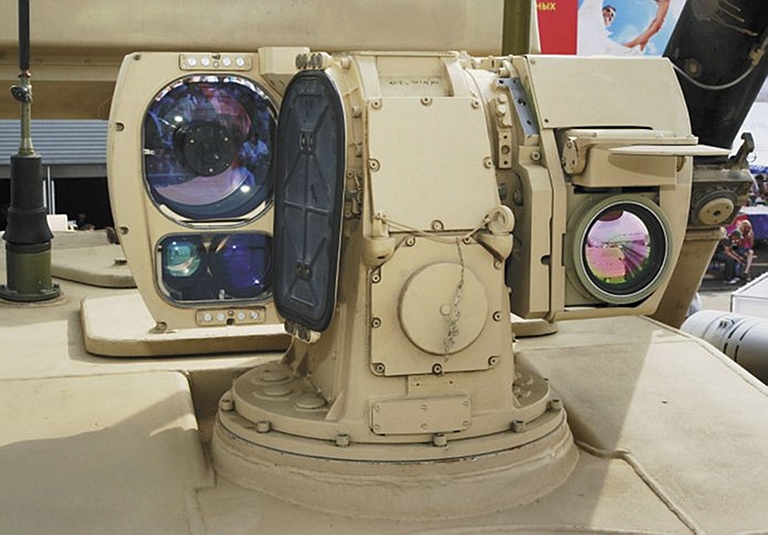
1RL-123E long range radar and Pantsir-S1 control center:
The Pantsir system in battalion form has two other parts, which include a 1RL-123E long-range radar and a control station. The exact range of the 1RL-123E radar has not been disclosed, but in various sources, a range of 200 to 350 km has been announced for it. The dimensions of this radar are 2.8 x 3.4 meters and is installed on a KAMAZ-6560 truck. The main drawback of this radar is the lack of 360 degree coverage.
The control station in a Pantsir missile system battalion is also responsible for coordinating three or four Pantsirs with long-range radar or coordinating several Pantsir systems in the absence of long-range radar. Of course, there is also the possibility of coordination between several Pantsir systems in the absence of a control station.


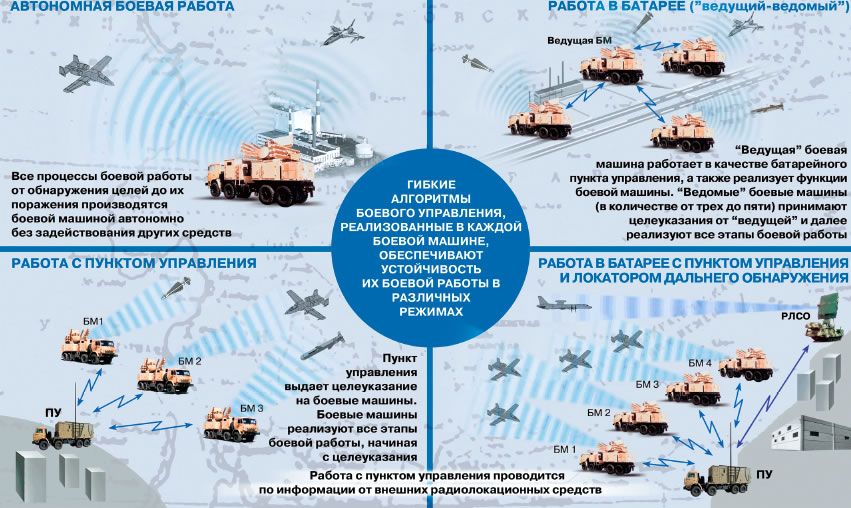
Pantsir-S1 exports:
The first order of this system was registered by the United Arab Emirates worth 734 million dollars. The UAE ordered 50 96K6 Pantsir-S1 systems in May 2000. After the delivery of the first batch in November 2004, the United Arab Emirates requested a new radar, and in 2007, this batch was delivered with the UAE’s desired modifications.
Syria also ordered 50 Pantsir-S1 systems, which began to be delivered in June 2008. Jordan has also ordered an unknown number of this system. Serbia also announced on January 18, 2020 that it had purchased six Pantsir-S1 systems, and in February 2020, it received the first batch of Pantsir-S1.
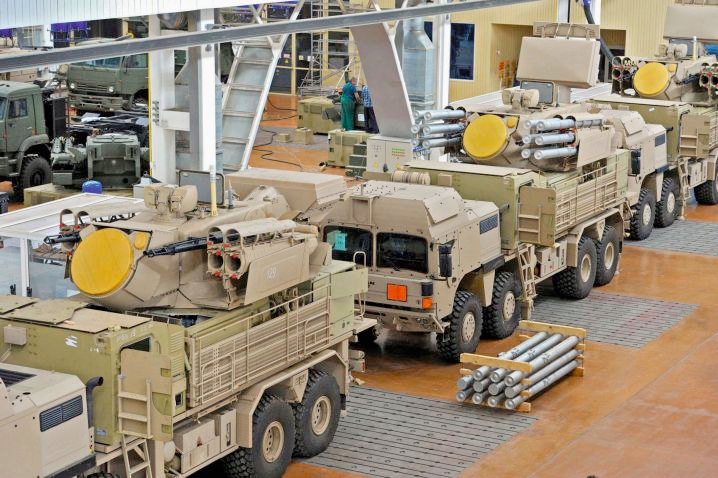

Pantsir-S1 system specifications:
Armament: 12 anti-aircraft missiles (SAM) on the launcher and 1400 30 mm rounds
Missile range: up to 20 km
Height of missile engagement: up to 15 km
Gun range: up to 4 km up to a height of 3 km
Radar detection range: 38 km (for a cross section of 1square meter)
Engagement range: 28 km (for a cross section of 1 square meter)
Maximum engagement speed: a target with a speed of 1000 m/s
Number of simultaneously engaged targets: 4 targets
Reaction time: 4 to 6 seconds if the system is online
Pantsir-S2/S2E missile system:
The Pantsir-S2 air defense system (export version Pantsir-S2E) is an improved version of the Pantsir-S1 system, which entered service with the Russian army in 2015. This system uses the same 2A38M cannon along with 12 missiles, which has a range of more than 20 kilometers.
The new Pantsir-S2 radar is a two-faced SOTS S-band radar that has a hexagonal appearance. This combination allows for faster monitoring of the environment as well as the possibility of engaging in one direction and monitoring behind the head at the same time. This radar has also been improved in terms of range and engagement; So that it has been upgraded from the possibility of simultaneously engaging with one target and guiding two missiles in the Pantsir-S1 system to simultaneously engaging with 4 targets and guiding 8 missiles in the Pantsir-S2 system.
This system has the new 57E6 missile (export version 57E6E), the range of which has been increased from 20 km to 30 km. Due to this increase in missile range, the new Pantsir-S2 radar should also be able to engage in a range of more than 30 km and detect targets at a distance of more than 50 km. The 57E6E missile has a weight of 76 kg with a 20 kg warhead and a speed of 1300 m/s.


In general, the main characteristic to distinguish the S2 variant from the S1 is the radar, which is Janus-faced in the Pantsir-S2 system. The extent of export success of this model is not yet known, as not much information has been published about it.

Pantsir-S2 system specifications:
Carrier vehicle: Kamaz-6560 8×8
Length: 10.3 meters
Width: 2.5 meters
Height: 3.2 to 5 meters
Crew: 3
Radar: SOTS S-band and 1RS2-1
Radar detection range: ~ 55 km
Engagement range: 30 km
Maximum engagement speed: targets with a speed of 1200 m/s
Number of simultaneously engaged targets: 4 targets
Reaction time: 4 to 6 seconds (if the system is online)
12 anti-aircraft missiles
1400 30 mm bullets
57E6-E missile
Weight: 76 kg
Warhead weight: 20 kg (5 kg of explosives)
Missile range: 20 to 30 km
Altitude of fire: up to 15 km
Missile speed: 1300 m/s (780 m/s at final stage)
Two dual 30mm 2А38M cannons
Gun range: 4000 meters
Altitude of fire: 3000 meters

Pantsir-M/ME missile system:
The Pantsir-M system (ME for export versions) is the naval version of the Pantsir, and its design was unveiled in 2015, and it has been in service with Russian Army since 2018. This system, which replaced the Kortik SAM system (SA-N-11 Grison), uses two 30 mm GSh-6-30K/AO-18KD gatling cannons with a maximum range of 5 km. Gatling cannon has a higher firing rate and better cooling than normal cannons due to the presence of six rotating cannons. The number of missiles has been reduced from 12 to 8.
Pantsir-M system can fire the Pantsir family missiles with a range of 20 kilometers and can also fire Hermes-K missiles.
The Hermes missile is a new and light missile that can engage light armored targets, various types of fortifications, small surface sea targets and air targets at a low speed.
The Hermes-K missile warhead weighs 27.5 kg, which consists of 13 kg of explosives. Hermes-K missile has two samples with 170 mm and 210 mm booster. The Hermes-K missile with a 170 mm booster weighing 110 kg has a range of 15 to 20 km, and the Hermes-K missile with a 210 mm booster weighing 130 kg has a range of 100 km.

The fire control radar of this naval system is developed based on the Pantsir 1RS2-1 radar, but the search radar of this system is installed on the mast in a four-sided manner. Also, this system uses an electro-optical system like the ground versions.
The Pantsir-M defense system was installed on the Odintsovo battleship and tested in October 2020. Pantsir-M was able to destroy all small air targets that were dropped on it by Su-27 fighter jets. Pantsir-M is now installed on Project 22800 of the Navy and other upgraded warships will also be armed with it. This system is likely to become the main close air defense weapon for the Russian Navy.

Pantsir-SA missile system:
The Pantsir-SA defense system, which was first unveiled at the 2017 Russian Victory Parade, is a development of the Pantsir-S1 system, which is mounted on the DT-30PM armored chassis. The DT-30PM armor consists of two separate parts. The Pantsir-SA appears to have been delivered to the Russian military since 2016.
The Pantsir-SA system has the same weapons station as the Pantsir-S1, but does not have the 30mm gun mounted on it. The main weapons of this system include 18 57E6 surface-to-air missiles, which are placed in 9 numbers in three rows next to each other on each side of the turret. This system can hit targets at a range of 20 km and a height of 15 km with a maximum speed of 1000 km/s.
The DT-30PM chassis used in this type of Pantsir has a YaMZ-847.10 12-cylinder V-shaped multi-fuel diesel engine with a power of 800 hp. The DT-30PM can travel at a maximum road speed of 45 km/h and reach a maximum range of 700 km. DT-30PM has the ability to cross slopes up to 30 degrees and transverse slopes up to 15 degrees, and can also cross obstacles with a width of 4.5 meters or a height of 1.2 meters.


Pantsir-SM missile system:
The Pantsir-SM defense system is developed based on the Pantsir-S1 system. This system, which was unveiled at the Army 2019 exhibition, had the same radar used in the Pantsir-S1, with the difference that its range was increased. The truck carrying this system has been changed to the K-53958 truck, which is basically a Kamaz-6560M military truck with an armored cabin. All components from search radar and fire control radar, optical system, 30 mm cannon and 12 missiles are installed on the turret assigned to the new truck. The only way to distinguish the S1 system from the SM is this type of truck, which is armored in the Pantsir-SM system and is very different from the Kamaz-6560.
A replica of the Pantsir-SM system was also exhibited, which shows this defense system with 24 missiles, in such a way that each side of the turret has four rows of three types of 57E6 missiles. But at the time of unveiling, it carries the same 12 standard Pantsir-S missiles.


This new system has a new missile called 57E6-E-M, which has a range of 40 kilometers. This new missile is designed with the same length as the previous missile to fit inside the previous missile canister. The 57E6-E-M missile gets all its propulsion power from the white booster, which is made of carbon fiber. The system also has a new smaller missile for targeting UAVs and precision guided weapons such as SDBs, which is called 12YA6 and has a maximum range of 5 km.
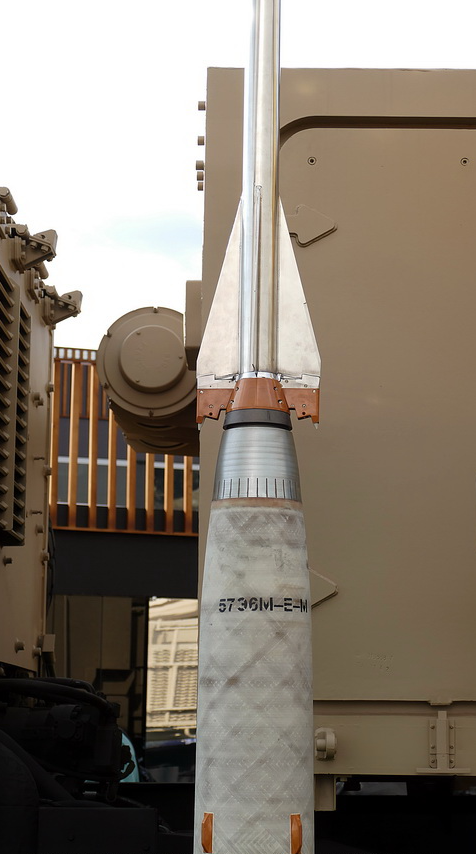
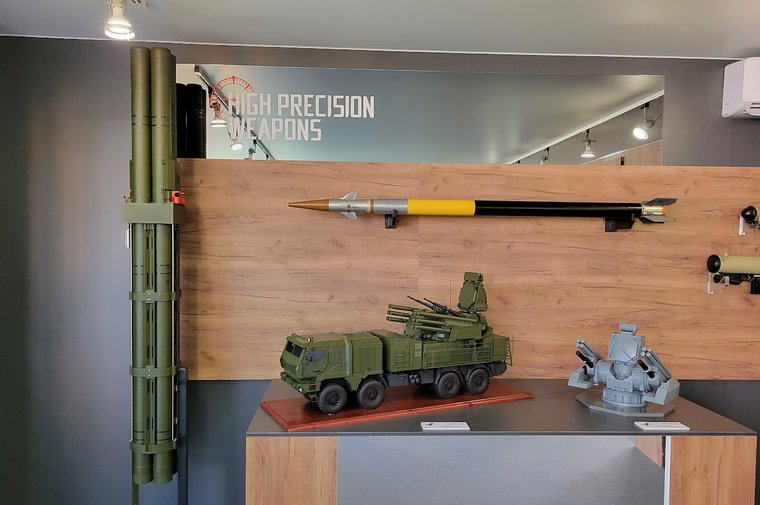
The range of the search radar has reached 55 km, and the engagement range has reached 40 km. The main composition of missiles in this system is 10 medium-range missiles and 8 short-range missiles.
Pantsir-SM system specifications:
Armament:
Missile: 12 57E6-E-M missiles independently or combined with 12YA6 missile on the launcher
Bullets: 1400 30 mm bullets
57E6-E-M missile range: up to 40 km with a maximum engagement height of 18 km
12YA6 missile range: up to 5 km with a maximum engagement height of 4 km
Gun range: up to 4 km with a maximum height of 3 km
Radar detection range: 55 km (for a cross section of one square meter)
Engagement range: 40 km (for a cross section of one square meter)
Maximum engagement speed: a target with a speed of 1000 m/s
Number of simultaneously engaged targets: 4 targets
Reaction time: 4 to 6 seconds if the system is online
Crew: 3
Pantsir-S1M missile system:
The Pantsir-S1M defense system was unveiled at the ARMY-2021 exhibition. This short-range defense system is a developed example of the Pantsir-SM version. The radar of this system is a janus-faced radar similar to the Pantsir-S2 system radar. Pantsir-S1M, like all versions of Pantsir, has a search radar, a fire control radar, and an electro-optical system, and is capable of firing all missiles developed for this system. The only way to distinguish this system from the S2 is the armored truck K-53958, which is identical to the SM system.
Increasing the detection range up to 80 km and increasing the number of detected targets up to 40, increasing the detection range, accurate tracking of 4 targets at the same time, automatic and semi-automatic determination of the coordinates of the missile and the target in the optical band using the electro-optical system (OES), the possibility thermal and television imaging, laser range finder, automatic optical and thermal detector are the new features of this system, which provides the possibility of airspace monitoring and target search by the operator at speeds of up to 1000 meters per second.


More images of Pantsir air defense systems:









“Pantsir Short Range Air Defense System” posters in Russian, Arabic, Persian, Kurdish and Azeri:



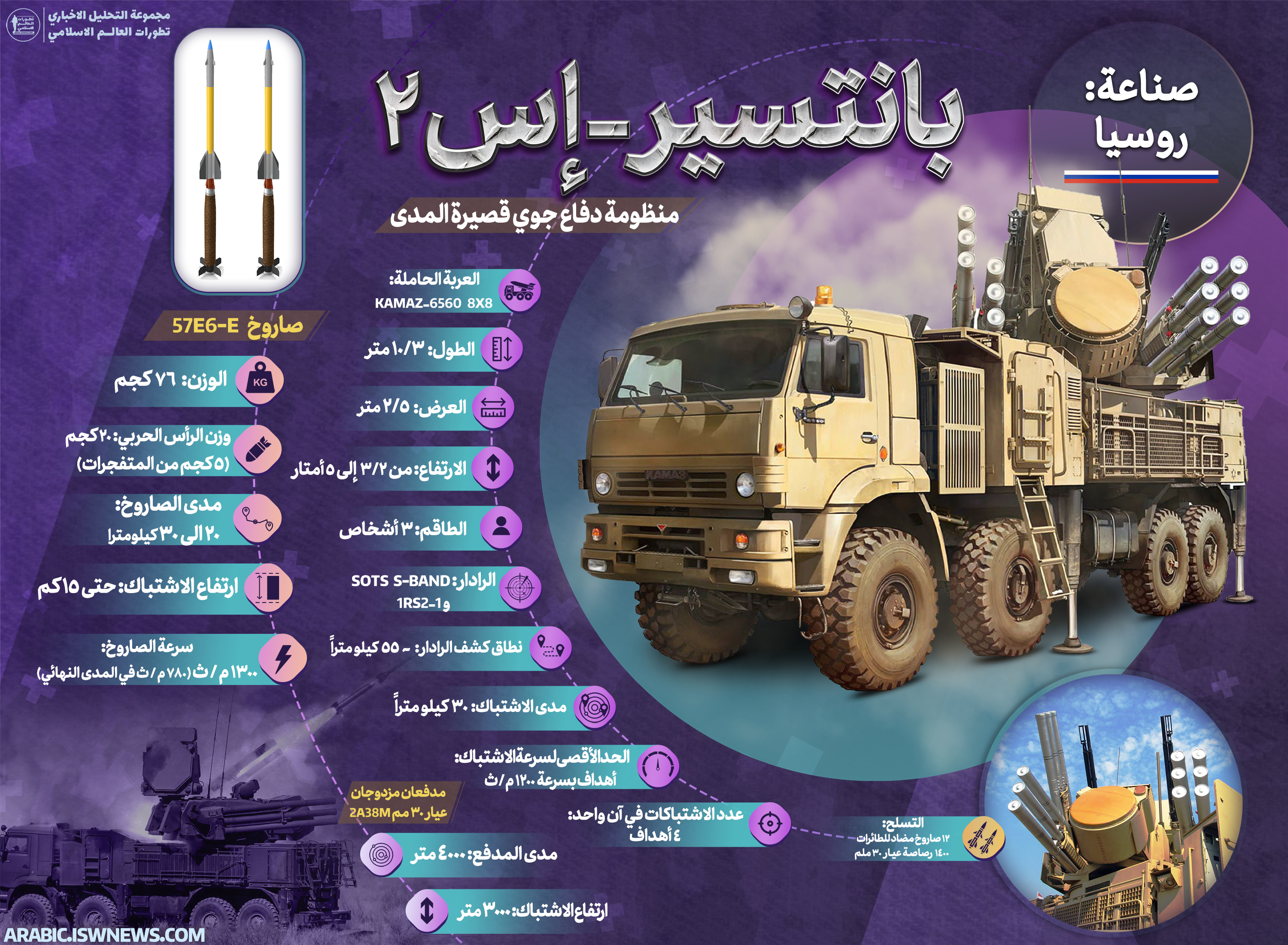

Source:
Pantsir missile system
“Pantsir'”, S-300 i drugiye sanitary neba
Станция обнаружения целей (СОЦ) 1РС1-1Е
KBP 2K22/2K22M/M1 Tunguska SA-19 Grison /96K6 Pantsir S1 / SA-22 Greyhound SPAAGM
57E6 / 57E6E / SA-22 GREYHOUND
Pantsir-S1 in Exhibition of MAKS-95
PANTSIR-S1 / PANTSYR-S1 / SA-22 GREYHOUND
KamAZ-6560
Pantsir-SA Arctic short-range air defense missile system
Pantsir-S1 / S2 / SM mobile air defense system
Electro-Optic Sensor and System Performance Verification with Motion Systems
Hermes (missile)

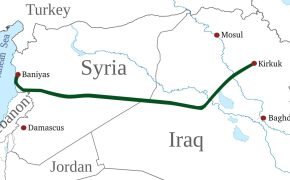


Comment